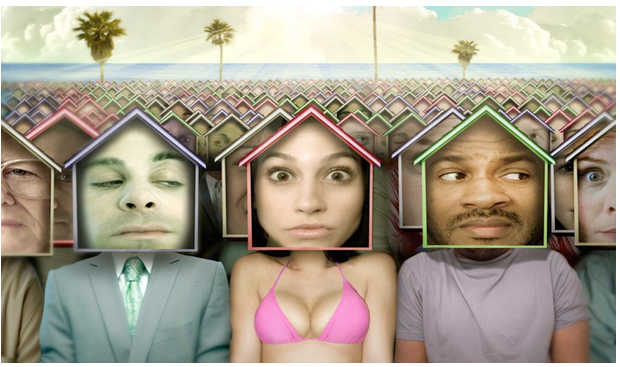CommentsWHAT KIND OF CALIFORNIA DO WE WANT?--Politicians, housing advocates, planners and developers often blame the NIMBY — “not in my backyard” — lobby for the state’s housing crisis. And it’s true that some locals overreact with unrealistic growth limits that cut off any new housing supply and have blocked reasonable ways to boost supply.
But the biggest impediment to solving our housing crisis lies not principally with neighbors protecting their local neighborhoods, but rather with central governments determined to limit, and make ever more expensive, single-family housing. Economist Issi Romem notes that, based on the past, “failing to expand cities [to allow sprawl] will come at a cost” to the housing market.
A density-only policy tends to raise prices, turning California into the burial ground for the aspirations of the young and minorities. This reflects an utter disregard for most people’s preferences for a single-family home — including millennials, particularly as they enter their 30s.
In California, these policies are pushed as penance for climate change, although analyses from McKinsey & Company and others suggest that the connection between “sprawl” and global warming is dubious at best, and could be could be mitigated much more cost-effectively through increased work at home, tough fuel standards and the dispersion of employment.
Of course, cities and regions should be able to produce high-density housing which appeals to many younger people, particularly before they get married or have children. The small minority who prefer to live that way later in life should be accommodated on a market basis.
But density is not an effective way to reduce housing costs in a metropolitan area. Multifamily urban housing, notes Portland State University economist Gerard Mildner, costs far more to build than single-family homes. For example, the median cost for a room in major metropolitan areas is more than $100 more expensive near the urban core than it is on the periphery.
The case for NIMBYism
When people move to a neighborhood, they essentially make assumptions about its future shape. This can be achieved by zoning, albeit sometimes too strictly, but also in Houston’s more market-oriented system, which allows for neighborhood covenants and has spawned migration to a plethora of planned communities.
This is not a petty concern. For most people, their house remains their most critical asset. Yet, our clerical government pays little attention to the concerns of the middle class, and is all too happy to undermine long-standing local democratic processes on these issues.
Some density advocates suggest that their assault on zoning reflects market-oriented principles but rarely extend this laissez-faire approach to peripheral development, the most effective path to lower land and house prices. Under current circumstances, such limited libertarianism leaves middle-income people no protection against either Gov. Jerry Brown’s “coercive state” or their speculator allies.
In my old neighborhood in the San Fernando Valley, few locals looked upon the creation of ever larger apartments in the area a boon, but rather as a source of increased congestion that strained sewers, water mains, roads and other infrastructure. Yet, in Los Angeles, where “infill” developers tend to also fill the coffers of politicians, our neighborhood did not stand a chance of opposing densification schemes.
NIMBYs are generally stronger in wealthy (and often bluish) places such as Beverly Hills, Palo Alto, Davis, Napa and San Rafael. The anti-forced-density campaign is also getting stronger in already dense places like San Francisco and has engendered an anti-density initiative on the ballot next spring in Los Angeles.
What kind of California do we want?
Ultimately, the question remains over what urban form we wish to bequeath to future generations. Ours is increasingly dominated by renters shoved into smaller spaces and paying ever more for less. California now has the lowest homeownership rate among the top 10 states for people between the ages of 25 and 34. Not surprisingly, the group leaving the state most is those between 35 and 44, a period that coincides with both family formation and home buying.
Forced densification, and the ban on peripheral building, is particularly harmful to the prospects for minorities. Metropolitan areas such as Los Angeles and San Francisco have rates of homeownership among Latinos and African Americans well below the national average, even further below such liberally oriented places as Dallas-Fort Worth, Houston, San Antonio and Atlanta.
So why only two cheers for NIMBYs? Anti-density activists still need to come up with an alternative housing agenda. You just can’t say no to everything. Communities should embrace some new alternatives, both on the periphery and by building appropriately dense housing in redundant office parks, warehouses and, most particularly, the growing number of semi-abandoned, older malls. These areas can provide housing without overstressing the roads and other infrastructure.
NIMBYs are not the biggest threat to the California dream. That honor goes to planners and speculators seeking to reshape our state and limit the opportunities for single-family and other family-friendly housing. Until the state Legislature recovers some respect for people’s preferences, NIMBYs remain among the last, if imperfect, bulwarks against a system determined to weaken our future middle class, leaving ample housing the province only of those with similarly ample means.
(Joel Kotkin is the R.C. Hobbs Presidential Fellow in Urban Futures at Chapman University in Orange and executive director of the Houston-based Center for Opportunity Urbanism (www.opportunityurbanism.org. This column was posted most recently at New Geography.) Graphic credit: LA Weekly.
-cw
Sidebar

 CityWatch Los Angeles
Politics. Perspective. Participation.
CityWatch Los Angeles
Politics. Perspective. Participation.
25
Thu, Apr














